ART IO
THE ART & CULTURE MAGAZINE





Bisa Bennett
An accomplished and experienced artist herself, Bisa Bennett understands the importance of creating meaningful opportunities for artists to exhibit their work. As a curator and multimedia designer, she is also well-versed in creating engaging opportunities for viewers to experience art. “At our gallery, our vision is to serve as a dynamic and inclusive platform that fosters connections between artists and art enthusiasts, nurturing a vibrant and diverse artistic community,” she explains.
Cover Photo Artist: Marta Carceller
Instagram: artio.art.gallery
Email: exhibit@artiogallery.com
Copyright © Artio Gallery.Inc





Marta Carceller Interview
The Importance of the Art Fair
Dahyun Kim Interview
Represented Artist


PAINTINGS BY
Painting is a deeply personal endeavour for Barcelona-based artist Marta Carceller. With an academic background in music and psychology, Carceller decided to fully commit to her lifelong passion for art after tragic loss and the Covid pandemic. She explains, “After the tragic death of my husband and father of my 4 children, I began to dedicate myself even more to this exciting world of art and realised that what my husband encouraged me to do was what really fulfilled me and what I really needed: to stop the world in order to learn from myself and from my own mistakes and to take the time to explore my own interior.” The result is a remarkable portfolio of paintings inspired by the artist’s everyday life.
Carceller has created a unique visual vocabulary, combining abstraction and figuration in warm light-filled paintings characterised by a dynamic textured surface. When describing her technique, the artist explains, “Although the intense work of drawing and highlighting the colours and shadows allows me to achieve two-dimensionality, a fine rain of abstraction runs through my paintings, soaking behind it the everyday figuration in an elegant pictorial symbiosis.” Carceller skilfully combines hyperrealism and painterly expressionism in artworks that represent poignant moments in time. In Immersed in fantastic worlds a child is reading on a step outside; the warmth of the sun is palpable. In the same direction depicts two children animatedly running down a treelined street and into the future. Carceller captures the nostalgia, tenderness and beauty of everyday moments.
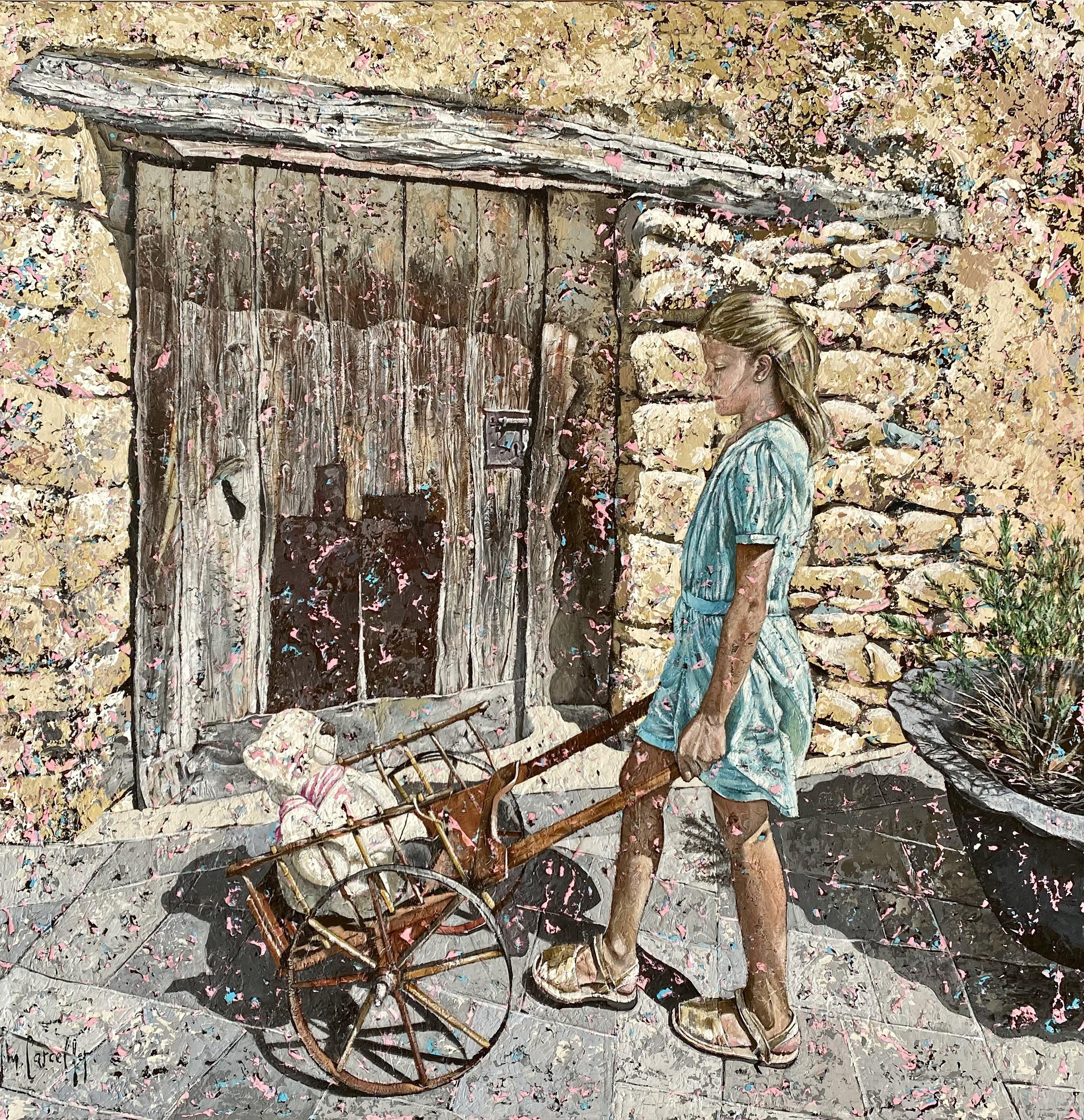
The artist takes a dynamic and open-ended approach to her work, not knowing how her ideas will materialise, but enjoying the spontaneity of the process, “I know how I start a work, but not how I am going to finish it. In my case, the act of creating has a clear starting point, but as I advance and delve deeper into it, it becomes a truly exciting and extremely enriching adventure, pouring part of myself into the fabric or wood. I have found in the artistic discipline and the creative process a constant source of personal and creative growth.” An important part of this process is imbuing the work with emotion to evoke the artist’s emotion for her subject matter, and in turn, encourage an emotional response in the viewer. She hopes that “what they observe stirs some internal aspect, and with this, perhaps it can lead them to relive memories or past experiences.”
Carceller hopes that her works create a moment of reflection for the viewer, “to stop time and to observe and feel, breaking with the inertia of everyday life which pushes us to do things with voracious demand, competitiveness, and speed.”.


In the same direction / acrylic oncanvas / 150 x 100 cm
Carceller has exhibited internationally both in galleries and in Art Fairs, in Spain, France, England, Greece, Germany, Austria, Luxembourg, Belgium, Switzerland, Italy, United States, Colombia, Monaco, Japan, Netherlands, Switzerland and Denmark
The Role of Art Fairs in Shaping the Contemporary Art Market
”
Art fairs have grown in number and significance considerably in recent years. Pearl Lam writing for Forbes reported that in 2005 there were 68 major art fairs, while in 2024 there are set to be at least 377 art fairs across the world. Art fairs are an essential part of the global art market. Notable fairs in the art world calendar include big hitters such as Art Basel, Frieze, The Armory Show, 1-54 Contemporary African Art Fair and Art Dubai as well as fairs for more modest pockets such as the Affordable Art Fair. According to The Art Basel and UBS Global Art Market Report 2024, 29% of artwork sales in 2023 were made at in-person art fairs. While the economic value of art fairs is important to note, the significance of the art fair as an epicentre for international gallerists, collectors, curators and art lovers cannot be overestimated. For example, in 2023 it was documented that 79,000 people attended Art Basel Miami Beach. The Affordable Art Fair reports that more than 3.3 million people have visited the fair worldwide since its inception in 1999.
The phenomenon of the art fair is intrinsic to the contemporary art market. Below Artio explores some of the reasons why:
Art fairs give visitors the opportunity to visit a global collection of galleries in one location, providing a truly international view of the contemporary art market. At an art fair, an artist’s work reaches beyond a local or national audience. Those artists exhibited are located within an international context and are exposed to a broad and diverse audience of other artists, gallerists, and collectors.
The art fair has a legitimising effect on the work of both established and emerging artists. Visibility at an art fair gives an artist credibility, which therefore impacts the market value of their artwork. For example, after discovering the work of Amoako Boafo on Instagram, gallerist Mariane Ibrahim dedicated a whole booth to the artist at Art Basel Miami Beach in 2019. Baofo’s presentation was an instant sell-out, motivating high demand from collectors and museums alike. According to the BBC, the record price for Boafo’s work is currently £2.5m.
An art fair can also provide visibility for historically overlooked
artists. For example, artworks from 1945 to 1975 by Surrealist Alice Rahon were presented by Gallery Wendi Norris at Frieze Masters in 2021. This exhibition was part of a resurgence of interest in the artist’s practice that saw her work included in museum exhibitions at the Metropolitan Museum of Art, New York, and Tate Modern, London (2021-2022) and the Venice Biennale (2022) among others.

Art fairs are a barometer for measuring current trends in the art market. They are a framework for accessing work by new talent as well as established artists gaining new recognition. Programmes such as the Focus section at Frieze London showcase innovative emerging art scenes and ‘ones to watch.’ Focus presents galleries that are 12 years old or younger, creating a snapshot of what is new and upcoming. At Frieze Masters, Spotlight is a section that features
presentations of rare works by 20th-century artists. In 2022, Spotlight presented 26 influential yet underrepresented female artists thereby showcasing an important, often invisible chapter of art history.
Paying attention to which galleries and artists obtained sales can also be a way of measuring current market trends. For example, Artsy documented that in the 2023 edition of Frieze, two of the biggest reported sales were sculptures by late women artists: Louise Bourgeois’ Knife Work (1949) sold for $3 million, and Lousie Nevelson’s sculpture Model for Celebration II (1976) sold for $2 million.
Art fairs provide a unique confluence of artists, gallerists, curators, collectors and art lovers. They provide a platform for networking, conversation and learning. As such, they impact the shape of the art world and the art market, they help to determine trends, visibility and value. While an economic endeavour, the best fairs are arguably those that provide moments of discovery, and that ultimately celebrate the enduring power of art.

With an extensive background in film, it is no surprise that Korean artist Dahyun Kim is interested in the moving image. For Kim, art is a means to capture movement, each painting a moment of dynamic energy rather than a static pause. The artist elaborates, “The point of my work is that abstract colours and touches must express images of movement so that you can feel the image of movement.” Paintings such as Broken Story of Us and Defunct Mythology employ a monochrome colour palette, drawing the viewer’s attention to the artist’s vibrant expressive mark-making and brushstrokes. Property of a Relationship depicts a different application of paint, a multitude of colours are layered, stippled and brushed to create different surface patterns and contours.
Before beginning a piece, Kim does not have a predetermined idea of what she will create, rather she trusts the spontaneity of the process. While the composition is not pre-planned, the artist chooses her tools, colours and paint according to her emotional state. She explains, “I tend to mix paraffin and linseed oil appropriately depending on the colour and touch. If my emotions are light, I use a lot of paraffin and if I feel that I need to touch them heavily, I use linseed oil a lot.” The titles of her works allude to the emotion the artist is channelling in each piece, for example, her Loneliness Afterwards paintings seem to capture a swirling storm of feelings.
Colour is essential to understanding Kim’s work. Heavily influenced by Abstract Expressionism, the artist uses colour conceptually, “you have to think of ideas rather than concrete reality,” she explains, “I choose colours according to my feelings every day, every moment.” In this way, her practice is a deeply personal endeavour, a way to explore and express her feelings and ideas, “my feelings such as jealousy, greed, desire, love, inclusion, sym-
Dpathy, and hatred change every moment, but they make me produce artistic energy more soberly,” the artist explains. Kim’s paintings are a powerful expression of her own creativity and experience, the movement and emotion of the artist are literally communicated through the colour, movement and materiality of paint. As Kim summarises the power of her paintings, “I want viewers to feel emotional freedom through my work.”


Property of Realationship / Oil on Canvas / 72x60 cm
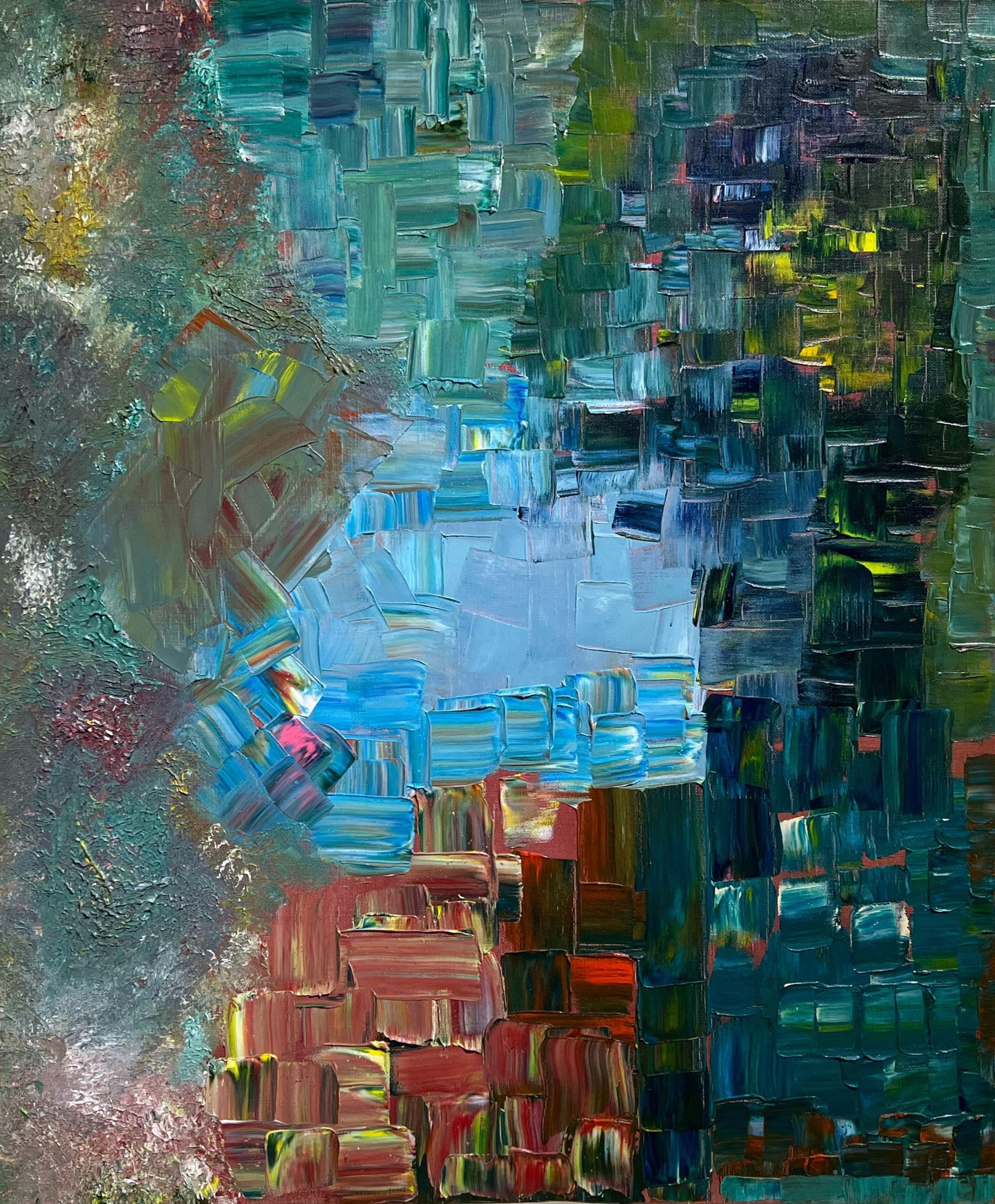

Windy Bircu’s artworks have a powerful narrative quality that alludes to the complexity and pain of the human condition. Working in oil and chalk, the artist’s subject matter depicts the uncanny, the surreal and the dream-like. Bircu herself explains, “…my work is a visual therapy. All you see here are pure daemonic pretexts to cleanse the viewer inside.” Her position within a lineage of Surrealist painters is clear. Bircu’s work is characterised by a desire to explore the psychology of the human mind. Her paintings appear to be conjured from the artist’s subconscious inner world. In Renaissance I Bircu depicts the liberation of the mind in a literal and figurative sense. Two heads are seen in profile. An arching spine mirrors a snake-like tongue tumbling from the mouth of one of the figures. In Human Being two faces are bisected, plants and flowers growing in place of the mind. Bicu’s images are powerfully ambiguous and endlessly intriguing.

Sculptor Timothy Carter works with an economy of means, using only the colour yellow and only three steel l-beams. Working within this restricted framework of minimal components, the artist finds endless possibilities. His unique process involves using hydraulic machines to curve steel. The artist takes a hard industrial medium and sculpts it to create refined forms.
Yellow I-beam Sculpture / weldedsteel I-beams painted with oil paint / 135 x 38x 84 cm
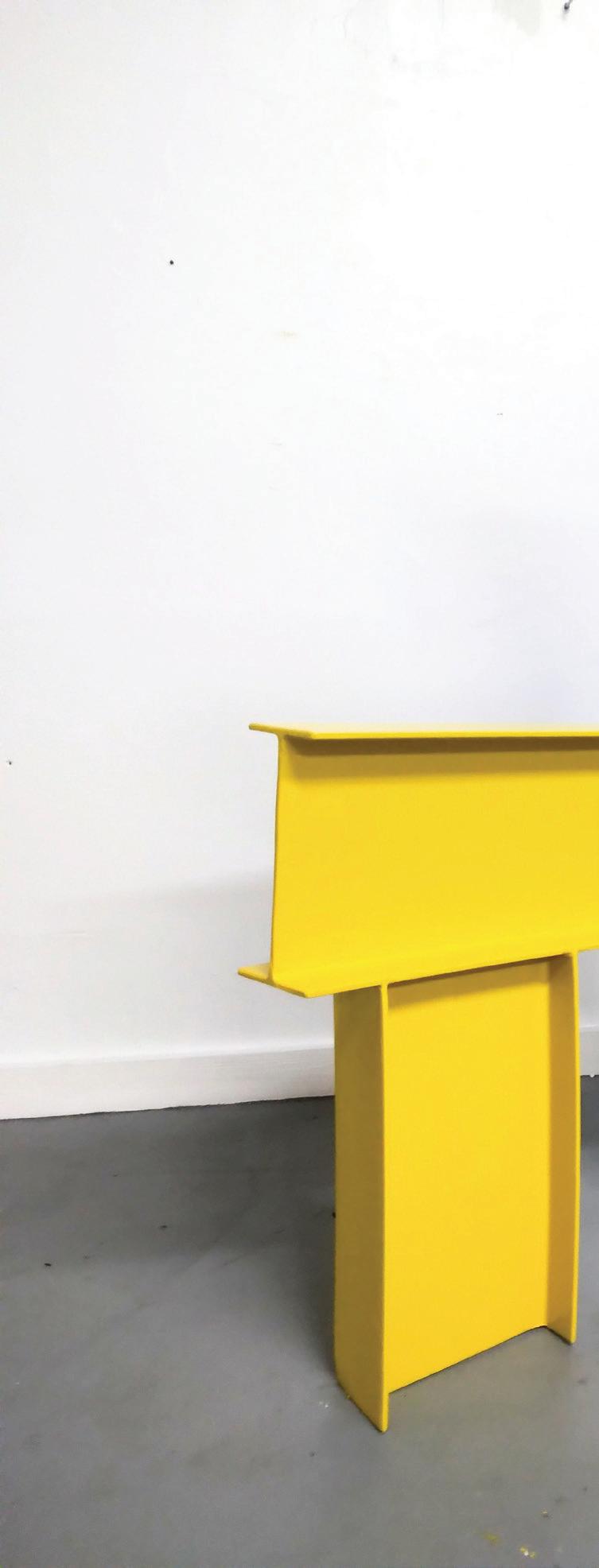


By focusing on a single colour and medium Carter’s practice is characterised by an elegant simplicity and a minimalistic purity. In the manner of masters such as Yves Klein and Kazimir Malevich, Carter’s monochromatic approach draws our attention to the balance of forms and the invocation of feeling. His sculptures are instantly recognisable for their signature aesthetic, while each piece has a singular character and a unique personality.


Lauren Forcella spent her childhood in nature, developing a passion for the earth that led her to study geology and later work as a hydrogeologist. This deep affinity with the natural world is embedded in her monumental oil paintings that capture the beauty of nature. Works such as Aspen Trail and Autumn Vineyard encapsulate the sense of awe felt when faced with a sun-soaked hilltop or a dense and towering forest. Forcella is an incredible colourist, her paintings go beyond pure realism to capture the emotion of a place. Like the Fauve painters of the 19th century, she uses colour as an expressive material applying a vivid chromatic palette. Working in a style that can be described as ‘Impressionism alla prima’ the artist captures the changing light and ambience of mountains, fields, sunsets and seascapes.
Based in Sweden Daniela Kronvall is an artist, digital content creator and entrepreneur. Inspired by meditation, Kronvall’s practice can be located within a history of abstract expressionism and automatism in art making, a form of expression which prioritises the unconscious mind. In a statement the artist explains that when meditating she “untethers herself from the constraints of time, embracing the limitless expanse of the quantum field.” In pieces such as Wonderland Love and I Love Me, Myself and I the artist uses a soft colour palette, layering the surface of the canvas in the manner of action painting, creating, swirls and swathes of impasto paint. Kronvall’s abstract paintings are replete with texture and energy.

Wonderland Love / acrylic on canvas / 100 x 100 cm

I Love Me, Myself & I / acrylic on canvas / 100 x 100 cm


Presence / oil on canvas / 50 x 50cm
Shugaieva’s portraits are portraits of female strength, beauty and empowerment. With a background in fashion design and illustration, Shugaieva’s life changed when her business was destroyed in Ukraine during the Russian invasion of her home country. On moving to America art became a medium to explore her feelings of grief, pain, love and hope.
Her love for her motherland can be seen in paintings such as Presence. In this piece, the colours of the Ukrainian flag provide a bold background for a woman looking steadfastly at the viewer with a magnificent headdress in the form of a vibrant red poppy, a symbol of remembrance. In Ukrainian Married Woman, the artist depicts an elegant figure in traditional Ukrainian national dress. Shugaieva combines classical portraiture with a crisp contemporary aesthetic to create powerful personal and cultural expressions of strength and pride.


Indrė Gražulevičiūtė-Vileniškė, also known as Indrė Wooden Fox or Medinė Lapė creates mixed media works, paintings and more recently digital artworks incorporating the use of Artificial Intelligence (AI). Gražulevičiūtė-Vileniškė is inspired by the natural world and the animals that inhabit it. In works such as Owl Moon and Owl Cup she creates mythical folkloric images using mixed media. Painstakingly rendered patterns such as tightly woven concentric circles form the backdrop for collaged figurative motifs. The artist’s technique and chosen subject matter give the work a soft ethereal quality. In Owl Moon, a crescent moon encircles an owl above a steaming cup. These images are dreamlike and surreal. The use of collaged elements draws the viewer’s attention to the eyes within the image, while the artist’s depiction of an owl may symbolise wisdom.


Noémie L. Côté describes her practice as open-impressionist, a skilful interweaving of classical impressionism and fauvist expressionism that captures the vivid beauty of the natural landscape. Using oil and thick brushstrokes, Côté builds a painting resplendent with light and movement. Works such as Melody of the Dusk and Fall Serenity are luminous with vivid colour. Her textured surfaces, glowing skies and richly hued landscapes are uplifting and joyous. In a statement, the artist explains that she sees her mind as “a prism that takes in the white light that she sees and disperses the component colours on the rolling hills or through the branches of a tree.” Thereby giving her work “the quality of blown glass where colours play off each other and come together as a whole to define the feeling of a scene.”

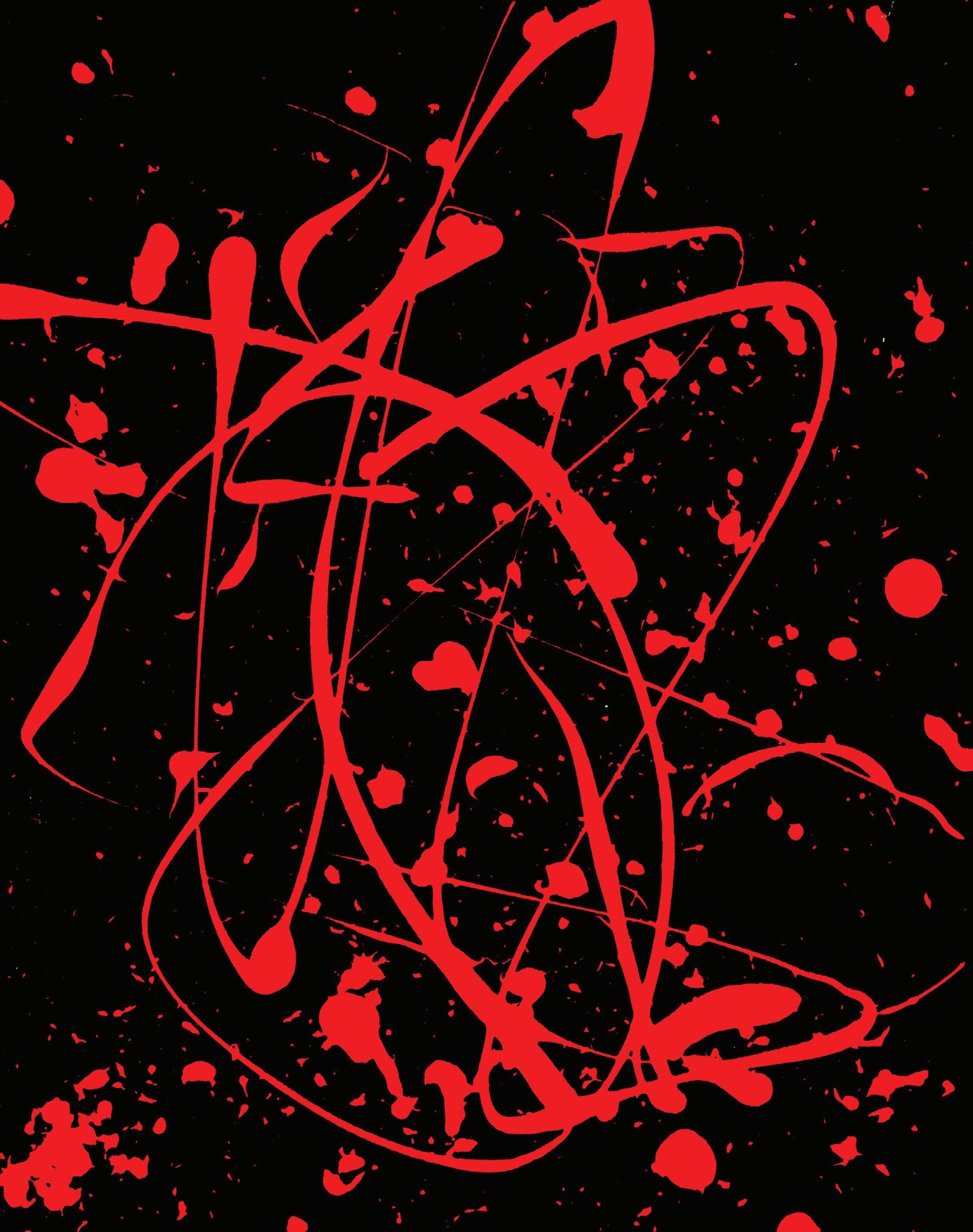
OliviaSeger’s paintings are instantly recognisable for their black background. Darkness becomes a space from which the artist paints light. In Dark Art Deep Red luminous red paint explodes seemingly from within the canvas, a swirling galaxy of abstract lines and splattered dots. In Dark Art XXI windows of light and dark are interspersed with flecks and small pools of green. Seger’s work is full of light, movement and dynamic energy. Her work can be situated within a heritage of abstract expressionist painters whose paintings mapped the energy and emotion of the artist across their surface. In a statement, Seger describes her practice as “the language of her subconscious” and “an explosive expression of her inner world.”

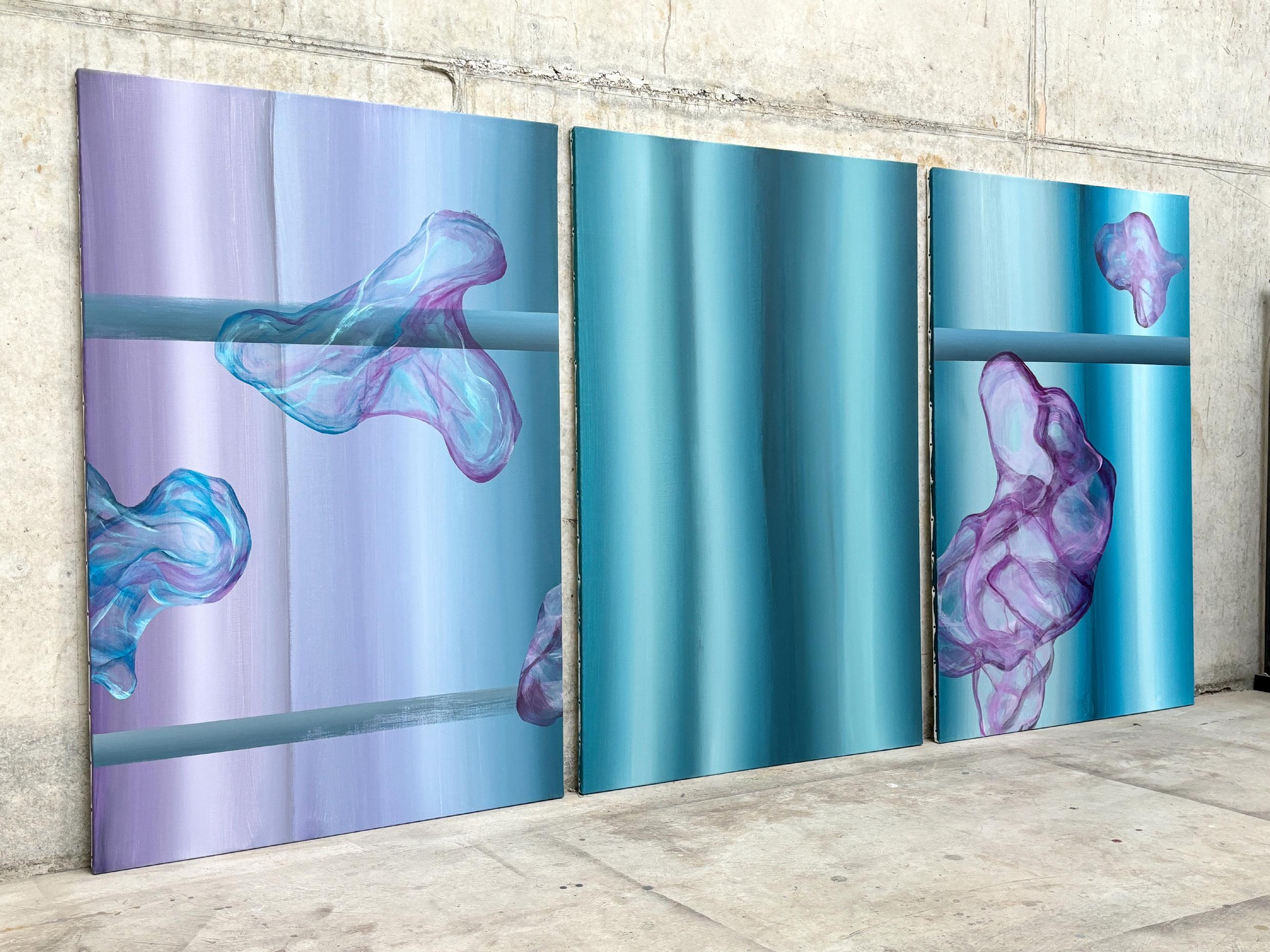
Witha background in economics and art, artist Brigitte Puschmann is interested in complexity and transformation. The artist explains, “My art celebrates life’s complexity and the remarkable order that can emerge from chaos. Even in turbulent times, we can find structures, lines, and patterns that guide us.” In her Bubble Stripes series, the artist paints floating forms and stripes of harmonious colours. The bubbles she paints are gossamer shapes floating in landscapes of luminous washes of paint. These works embody a beautiful contrast, incorporating solidity and transparency, fluidity and concreteness. Puschmann’s paintings are enigmatic and tranquil. “My pieces serve as a visual diary of continual change, reflecting the profound interconnectedness that threads through all existence.”

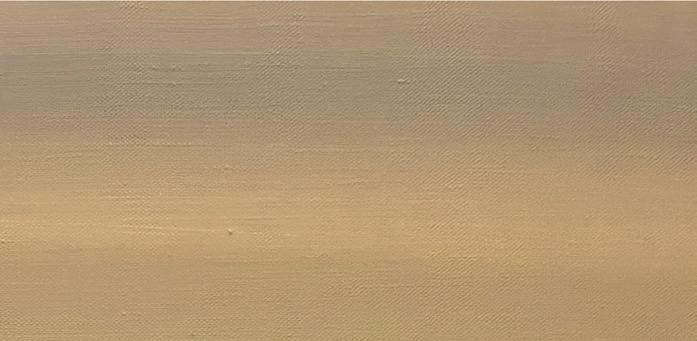




Barbara D’Angelo Månsson is interested in the relationship between things; between herself and the world and the viewer and her artwork. Her energetic abstract paintings explore the relationship between vibrant colours and visual elements. Each canvas contains within it a microcosm of forms, textures and materials. Heavily inspired by American Abstract Expressionism and her Scandinavian heritage, the artist’s paintings recall myriad references from Pop art and landscape painting to Basquiat and graffiti art. D’Angelo Månsson builds her paintings by layering unconventional materials such as sand, plastic, and metal, creating textured canvases characterised by the artist’s signature impasto technique.
With a background in molecular biology, D’Angelo Månsson’s practice embodies an experimental explorative approach to creativity. In a statement, the artist explains, “My creative process is an exploratory voyage, one that begins with a colour or a texture that resonates with me and evolves into a narrative on the canvas.” Her work explores emotions, thoughts and feelings that exist beyond language, “Ultimately, my art is an expression of my desire to connect, to communicate thoughts and emotions that words alone cannot convey.”
Born in Italy, D’Angelo Månsson now lives and works in Sweden. She has exhibited internationally in various countries including Spain, Portugal, Denmark, America, Italy and the UK.



Yukiko Miyamoto’s acrylic paintings are a visual feast of pattern, colour and texture. Miyamoto has a self-proclaimed desire to embrace contrast and difference in her art, opposing uniformity and conformity. She does so by adopting an eclectic palette and skilfully combining abstraction and figuration. Layering rich details and intricate patterns, the artist’s paintings have a rhythmic and kinetic quality. Vivid colours, abstract forms and animal figures contrast and complement each other, appearing to recede and emerge from within the canvas. Miyamoto’s paintings express a unique and mesmerising visual language. In works such as Canvas F10 and Canvas F20, the artist creates brilliantly hued self-contained worlds that incorporate technicoloured flora and fauna, alongside wild animals created using abstract geometric forms.

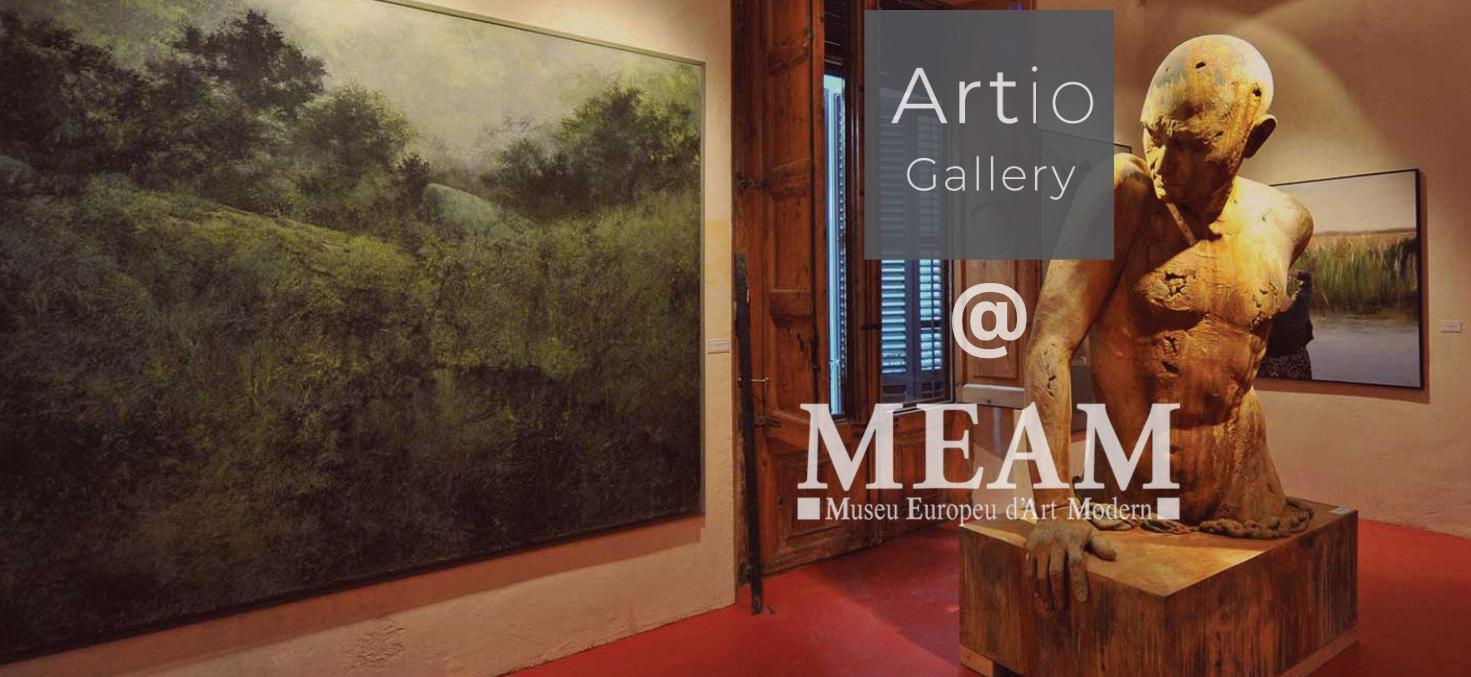

“Beyond Borders” exhibition, hosted by ARTIO GALLERY at the European Museum of Modern Art in Barcelona, Spain. October 11-13th, 2024
THE ART & CULTURE MAGAZINE
www.artiogallery.com exhibit@artiogallery.com